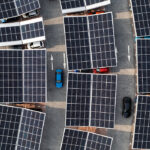The Biden-Harris Administration announced the availability of nearly $11 billion in grants and loan opportunities aimed at bringing affordable, reliable clean energy to communities across the U.S.
The U.S. Department of Agriculture (USDA) will open a Letter of Interest process for the Empowering Rural America (New ERA) program, which makes $9.7 billion available to eligible rural electric cooperatives to deploy renewable energy systems, zero-emission and carbon capture systems.
Additionally, the USDA will open a Letter of Interest process for the Powering Affordable Clean Energy (PACE) program, which makes $1 billion available in partially forgivable loans to renewable-energy developers and electric service providers, including municipals, cooperatives, and investor-owned and Tribal utilities to help finance large-scale solar, wind, geothermal, biomass, hydropower projects and energy storage in support of renewable energy systems.
Together, these programs represent the single largest investment in rural electrification since President Franklin D. Roosevelt signed the Rural Electrification Act into law in 1936.
“The Biden-Harris Administration’s commitment to cleaner energy provides rural communities with an affordable and reliable power grid, while supporting thousands of new jobs and helping lower energy costs in the future,” Agriculture Secretary Tom Vilsack said in a statement. “These investments will also combat climate change and significantly reduce air and water pollution that put children’s health at risk. The U.S. Department of Agriculture stands ready to partner with municipalities, tribal entities, entrepreneurs, rural electric cooperatives and other utilities to see this transformative investment come to life and create new economic growth and healthier communities.”





